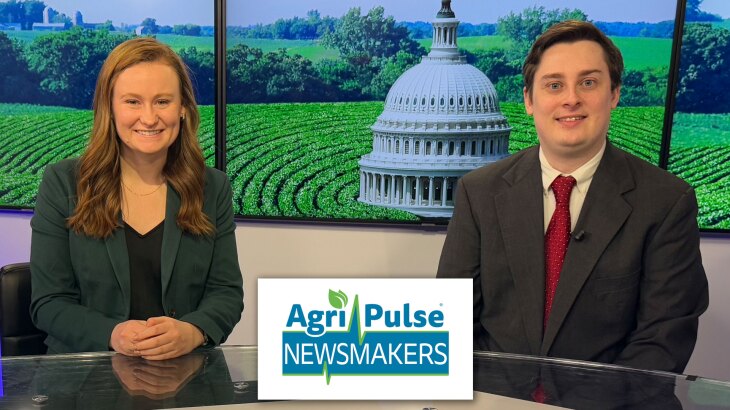The first Arbor Day was celebrated in Nebraska City back in the 1870s. Now, the national holiday is held across the United States on the last Friday of April.
What is Arbor Day?
Arbor Day was conceptualized by a journalist named Julius Sterling Morton back in the early 1870s. Morton and his wife discovered their love for trees after moving to Nebraska and purchasing 160 acres of plains with very few trees. They spend tons of time and energy learning about trees and planting different varieties on their property.
As the editor of the Nebraska City News, Morton began sharing about his tree planting in the newspaper. He hoped to increase awareness about the importance of planting and caring for trees. The idea grew until, eventually, he proposed that everyone in his Nebraska City community gather to plant trees together on January 7, 1872, which became the first official Arbor Day celebration.
The idea continued to take root and grow. Around 20 years later, Arbor Day was being celebrated informally in almost every state in the US. It gained official recognition on April 15, 1907, when President Theodore Roosevelt made his Arbor Day proclamation. However, it did not officially become a national holiday until the 1970s, around 100 years after the inaugural celebration.
“It is well that you should celebrate your Arbor Day thoughtfully, for within your lifetimes the Nation’s need of trees will become serious,” Roosevelt said. “We of an older generation can get along with what we have, though with growing hardship; but in your full manhood and womanhood, you will want what nature once so bountifully supplied and man so thoughtlessly destroyed.”
When is Arbor Day Celebrated?
The date set in late April was chosen partially because it’s a great time to plant trees and also honors the founder’s birthday. While the national holiday is usually set on the federal level, and is typically the last Friday of the month, some states and municipalities often celebrate it at other times.
Is Arbor Day related to Earth Day?
Arbor Day and Earth Day are two separate occasions with slightly different missions, but the two go hand-in-hand. While Earth Day gives us a chance to reflect on our planet and how we can take better care of it, Arbor Day gives us all a chance to take action and give nature a helping hand.
Why are trees important?
Trees have extreme ecological importance. According to The Nature Conservancy, “Smarter management of trees, plants, and soil in the US alone could store the equivalent carbon of taking 57 million cars off the road!”
Trees clean the air around us by absorbing carbon dioxide from the air through photosynthesis and storing it in their roots. Taking in these greenhouse gases keeps them from building up in the atmosphere, which can worsen the effects of climate change. Because older trees store more carbon dioxide, it is equally important to care for and protect older trees as it is to plant new ones.
Through studying trees, scientists know that mature trees improve the air quality up to 100 feet away. That’s why it’s especially important to plant trees near your home, in agricultural and metropolitan areas where the tree canopy might be sparse, as well as in public spaces where people go to play, exercise, and get some “fresh air.”
What are good trees to plant for Arbor Day?
While all trees help recycle clean air, some types are better for planting than others. It’s advisable to select trees that are native species in your area and to avoid invasive species like privets and honeysuckle that spread quickly and harm other species in their immediate vicinity.
Some good backyard trees for American homes are American Holly, Eastern Redbud (Cercis canadensis); Tulip Tree (Liriodendron tulipifera), Paper Birch (Betula papyrifera); Crabapple (Malus); Fringe Tree (Chionanthus virginicus); Washington Hawthorn (Crataegus phaenopyrum); Serviceberry (Amelanchier).
For even more choices, check out the Arbor Day Foundation’s Tree Wizard.
For farmers, ranchers, and acreage owners, the Arbor Day Foundation recommends planting “conservation trees” or “working trees” that conserve soil, energy, water, wildlife, and the atmosphere. Doing so can increase crop yields, preserve topsoil for future harvests, help with flood control, prevent erosion, clean water, attract wildlife, and reduce carbon emissions.
Some fast-growing trees (3-5 years) in this category are redbuds, wild plum, hornbeam, and persimmon trees. Other good shade trees for farms that take longer to mature (up to 10 years) are oak, pine, and black gum trees.
When are people in my area celebrating Arbor Day? Can I get a free tree to plant?
While free trees might not be available in all areas, many events held around the U.S. through the National Arbor Day Foundation offer free seedlings to volunteers willing to plant them or in exchange for a small donation. To see if an Arbor Day tree planting event will be held in your area, click here.





















